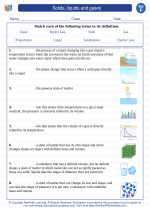De-icing
De-icing is the process of removing ice or preventing the formation of ice on surfaces. This process is important in various industries and fields, including aviation, transportation, and infrastructure maintenance.
Methods of De-icing
There are several methods of de-icing, each with its own mechanisms and applications:
- Chemical De-icing: This method involves the use of chemicals, such as potassium acetate, sodium chloride, or calcium magnesium acetate, to melt existing ice or prevent ice formation on surfaces.
- Heat-based De-icing: Heat can be used to melt ice by applying hot air, steam, or electrical heating elements to the affected surfaces.
- Mechanical De-icing: Mechanical methods, such as scraping or brushing, physically remove ice from surfaces.
Applications of De-icing
De-icing is crucial in various scenarios, including:
- De-icing of aircraft to ensure safe takeoff and landing
- De-icing of roads and highways to maintain safe driving conditions
- De-icing of infrastructure, such as bridges and power lines, to prevent structural damage
Environmental Considerations
While de-icing is essential for safety and operational reasons, it's important to consider its potential environmental impact. Chemical de-icing agents can contaminate soil and water, so proper usage and disposal are critical to minimize negative effects on the environment.
Study Guide
Here are some key points to remember when studying the topic of de-icing:
- Define de-icing and explain its importance in various industries.
- Describe at least three methods of de-icing and provide examples of their applications.
- Discuss the environmental considerations associated with de-icing and the importance of responsible usage and disposal of de-icing agents.
- Explain the potential consequences of inadequate de-icing in the aviation, transportation, and infrastructure sectors.
Understanding the principles and applications of de-icing is essential for ensuring safety and efficiency in various fields, making it an important topic to study and comprehend.
.◂Science Worksheets and Study Guides Sixth Grade. Solids, liquids and gases
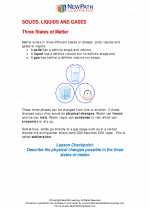
 Activity Lesson
Activity Lesson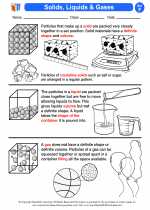
 Worksheet/Answer key
Worksheet/Answer key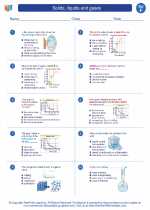
 Worksheet/Answer key
Worksheet/Answer key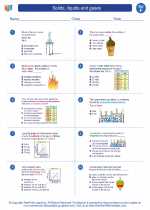
 Worksheet/Answer key
Worksheet/Answer key
 Vocabulary/Answer key
Vocabulary/Answer key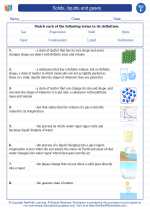
 Vocabulary/Answer key
Vocabulary/Answer key